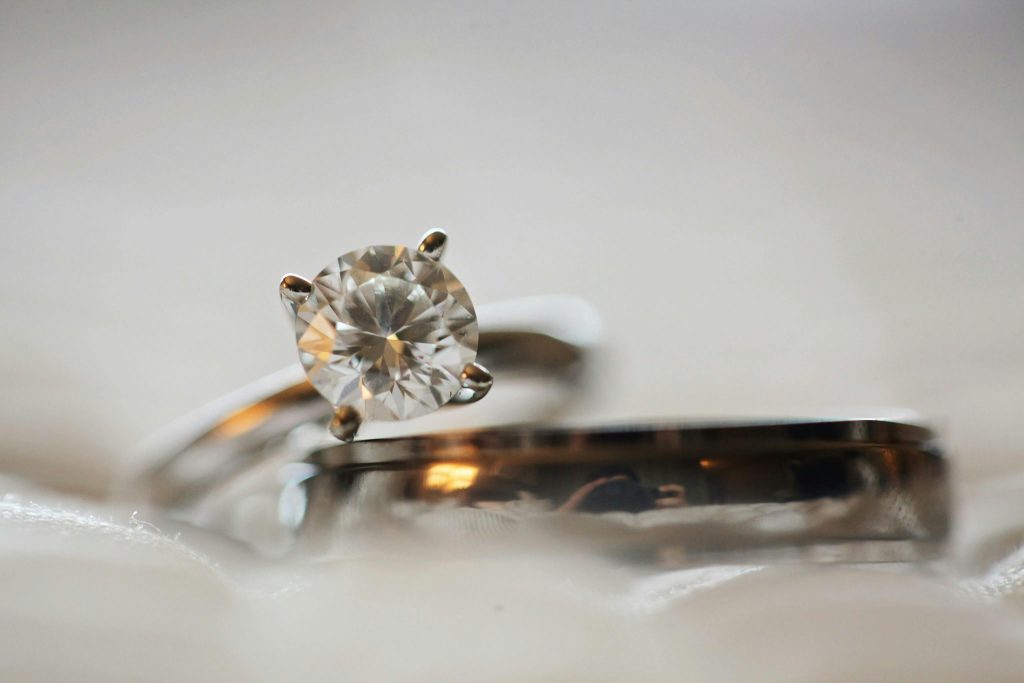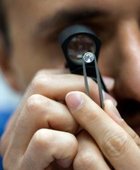Innovations in Diamond Sourcing: Lab-Grown Diamonds and Beyond
One of the most transformative changes in the diamond jewelry industry in recent years is the rise of lab-grown diamonds. These synthetic gems are created using advanced technological methods such as Chemical Vapor Deposition (CVD) and High Pressure High Temperature (HPHT), producing diamonds that are physically, chemically, and optically identical to their mined counterparts. This development has not only made diamonds more accessible due to lower costs but also addressed growing ethical and environmental concerns associated with traditional mining practices. In addition, lab-grown diamonds have opened doors to a more controlled and consistent production process, which benefits designers and manufacturers by reducing the unpredictability associated with natural diamond sourcing. The sustainability narrative is also shaping consumer preferences, with a growing number of customers—particularly millennials and Gen Z—actively seeking environmentally responsible options. As the quality of synthetic diamonds continues to improve and public awareness increases, their market share is expected to rise significantly, reshaping sourcing strategies and consumer dynamics in the years ahead.

Digital Design and CAD-CAM Technologies in Jewelry Fabrication
Computer-Aided Design (CAD) and Computer-Aided Manufacturing (CAM) technologies have revolutionized the way diamond jewelry is designed and produced. These tools allow jewelers to visualize intricate designs in a 3D digital environment before any physical material is used. With CAD, designers can achieve high levels of detail and precision that were previously difficult or impossible to replicate by hand. CAM then enables the automated manufacturing of these designs, whether through milling, laser cutting, or 3D printing. This combination of digital design and automated production allows for quicker prototyping, customization at scale, and reduced material waste. Jewelry brands are now leveraging CAD-CAM not only to enhance design accuracy but also to respond more rapidly to evolving market trends. Furthermore, this digital transformation allows consumers to participate in the customization process, as they can view photorealistic renderings and make real-time adjustments to styles, settings, and gemstone arrangements before finalizing a purchase. This integration of technology into design and fabrication is laying the foundation for a more personalized and efficient future in diamond jewelry production.
3D Printing and Additive Manufacturing in Jewelry Creation
3D printing, also known as additive manufacturing, is having a profound impact on how diamond jewelry is created. While traditionally used to produce wax or resin models for casting, newer techniques allow direct metal printing using materials like gold, silver, and platinum. This enables intricate geometries and lightweight structures that were previously difficult or impossible to produce using conventional methods. The ability to create complex, lattice-like designs or hollowed-out pieces with perfect precision not only enhances aesthetic possibilities but also contributes to reducing the overall weight and cost of high-end jewelry items. This innovation is particularly appealing in an industry where materials like gold and platinum are priced by weight. Additionally, 3D printing allows for rapid prototyping and on-demand production, reducing the need for large inventories and enabling just-in-time manufacturing. As 3D printing technology continues to mature, with improvements in speed, resolution, and compatible materials, it is expected to become an integral part of mainstream diamond jewelry production, supporting both bespoke creations and mass customization.
Smart Jewelry: Integration of Wearable Technology
The fusion of fine jewelry and wearable technology is another emerging trend redefining the diamond jewelry sector. Smart jewelry incorporates features such as activity tracking, NFC payment capabilities, security alerts, and even health monitoring into traditionally ornamental items like rings, necklaces, and bracelets. By embedding sensors and microchips into the design, manufacturers are blending luxury with functionality. Brands are experimenting with ways to integrate these capabilities without compromising the elegance or symbolic meaning of the jewelry. For example, some smart rings can monitor heart rate and sleep patterns while still featuring high-quality diamonds and precious metals. This convergence appeals to modern consumers who value convenience, multifunctionality, and aesthetics in their accessories. Moreover, as wearable tech continues to shrink in size and improve in efficiency, its incorporation into jewelry is becoming more seamless. The development of wireless charging and energy-efficient components has further removed barriers to adoption. In the future, smart diamond jewelry may not only serve as a fashion statement but also act as an integral part of users’ digital lives and wellness routines.
Blockchain and Traceability in Diamond Supply Chains
Blockchain technology is gaining traction as a tool to enhance transparency and trust in the diamond supply chain. Given the longstanding concerns over “blood diamonds” and unethical mining practices, consumers and retailers are increasingly demanding verifiable information about the origins of their gemstones. Blockchain offers a decentralized, tamper-proof ledger that can document every step in a diamond’s journey—from mine or laboratory to market. Projects like De Beers’ Tracr and IBM’s TrustChain are leading the way in implementing blockchain-based platforms that record details such as diamond characteristics, ownership history, certification data, and transport logs. This not only aids in authentication but also helps combat fraud and counterfeiting. For the consumer, it provides peace of mind and confidence in the ethical sourcing and authenticity of their purchase. For jewelers and wholesalers, it simplifies record-keeping, ensures regulatory compliance, and builds brand reputation. As adoption of blockchain spreads, it may become an industry standard, ultimately transforming how diamonds are marketed and sold by making traceability and ethics part of the value proposition.

Artificial Intelligence in Design, Marketing, and Consumer Insights
Artificial Intelligence (AI) is increasingly shaping the future of the diamond jewelry industry by streamlining operations, optimizing marketing, and enhancing the design process. In the realm of design, AI-powered algorithms can generate unique, data-driven design variations based on user preferences, current trends, and even historical buying patterns. This allows for the rapid development of collections that are not only aesthetically appealing but also commercially viable. On the marketing side, AI is being used to create highly targeted advertising campaigns by analyzing consumer behavior across platforms. Predictive analytics help brands determine which products are likely to appeal to different segments of the market, enabling more personalized and efficient engagement strategies. Moreover, AI chatbots and virtual assistants now guide customers through product selection, answer inquiries, and provide real-time support, contributing to a more interactive and seamless shopping experience. AI is also becoming crucial in inventory management and demand forecasting, helping jewelers reduce overstock and optimize their supply chains. As AI capabilities continue to evolve, their integration into the diamond jewelry sector is expected to expand, offering new levels of precision, personalization, and predictive power.
Augmented Reality (AR) and Virtual Try-On Experiences
As e-commerce continues to grow, augmented reality (AR) is becoming an essential tool for the diamond jewelry industry to replicate the tactile experience of in-store shopping. AR applications enable customers to virtually try on rings, earrings, and necklaces using their smartphone or webcam. This technology provides an immersive preview that helps bridge the gap between online browsing and confident purchasing. Companies are investing in sophisticated AR interfaces that allow users to view detailed representations of diamonds, assess different carat sizes, and explore customization options in real time. These features can significantly reduce return rates and improve conversion metrics, especially for high-ticket items like engagement rings. Beyond consumer convenience, AR also serves as a powerful storytelling and branding tool, helping jewelers highlight the craftsmanship and narrative behind each piece. By offering engaging and interactive shopping environments, AR is positioning itself as a critical component of the digital transformation of jewelry retail. With advances in photorealism and real-time rendering, virtual try-on experiences are becoming more accurate, further enhancing trust and satisfaction in the buying process.
Sustainability and Eco-Friendly Practices in Diamond Jewelry Fabrication
Sustainability is no longer a niche concern but a major driver of innovation and differentiation in the diamond jewelry sector. Consumers are increasingly prioritizing eco-conscious choices, prompting brands to rethink their sourcing, manufacturing, and packaging practices. Aside from the growing adoption of lab-grown diamonds, manufacturers are exploring recycled metals, energy-efficient equipment, and low-waste production techniques. Some companies are incorporating closed-loop water systems and solar-powered facilities to reduce their environmental footprint. In addition, sustainable packaging—using biodegradable or recyclable materials—has become part of a broader commitment to green practices. Certifications and standards like the Responsible Jewellery Council (RJC) and the Kimberley Process are playing an expanded role in shaping ethical sourcing policies. Transparency around these initiatives is vital, as customers often seek visible proof of a brand’s sustainability claims. As regulatory frameworks and environmental expectations evolve, sustainable innovation will likely remain a key area of competitive advantage. The future of diamond jewelry will depend heavily on how well brands can align environmental responsibility with luxury and aesthetic appeal.
Customization and On-Demand Production
Modern consumers increasingly demand personalization in their purchases, and the diamond jewelry industry is responding with flexible customization options enabled by technology. Customization ranges from simple engraving to complete design overhauls where clients select gemstone types, settings, band materials, and even unique motifs. Digital platforms powered by CAD and 3D rendering allow customers to co-create jewelry pieces and view them in real time before production begins. This co-creation model appeals to consumers seeking emotional or symbolic value in their purchases, such as engagement or anniversary jewelry. On-demand manufacturing further complements this trend by enabling production only when an order is placed, significantly reducing waste, inventory costs, and risk. This model is especially popular among independent designers and direct-to-consumer (DTC) brands that emphasize quality, uniqueness, and agility. By integrating flexible production pipelines and modular design systems, the industry is shifting from mass production to a more responsive and individualized approach. In the future, scalable customization supported by digital infrastructure may become a defining feature of successful jewelry brands.
Ethical and Transparent Branding as a Competitive Edge
With the convergence of social consciousness and luxury consumption, ethical branding has become a vital element of business strategy in the diamond jewelry sector. Consumers are now evaluating brands not only by the quality of their products but also by the values they represent. In response, many jewelers are investing in storytelling that highlights their ethical sourcing, fair labor practices, and charitable contributions. This form of value-based branding fosters emotional connections with customers and builds long-term loyalty. Transparency tools like blockchain, QR-coded certificates, and supply chain disclosures are increasingly used to substantiate ethical claims. Some brands are also adopting philanthropic business models, where a portion of profits supports education, women’s empowerment, or environmental conservation. These initiatives resonate particularly well with younger, socially-conscious buyers who view luxury purchases as extensions of their identity and worldview. As expectations for brand accountability continue to grow, ethical branding is likely to shift from a marketing differentiator to a baseline requirement in the competitive landscape of diamond jewelry.




